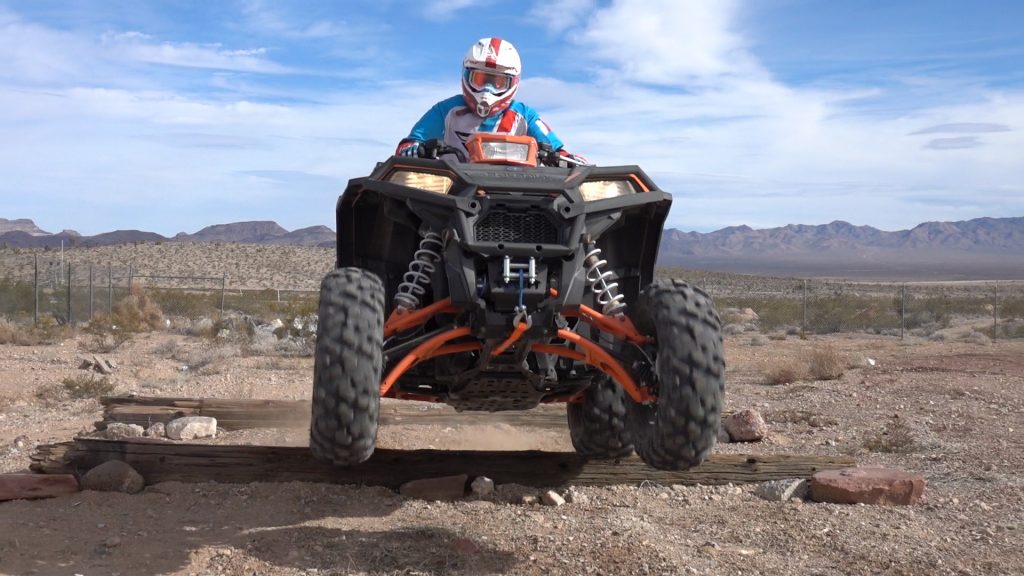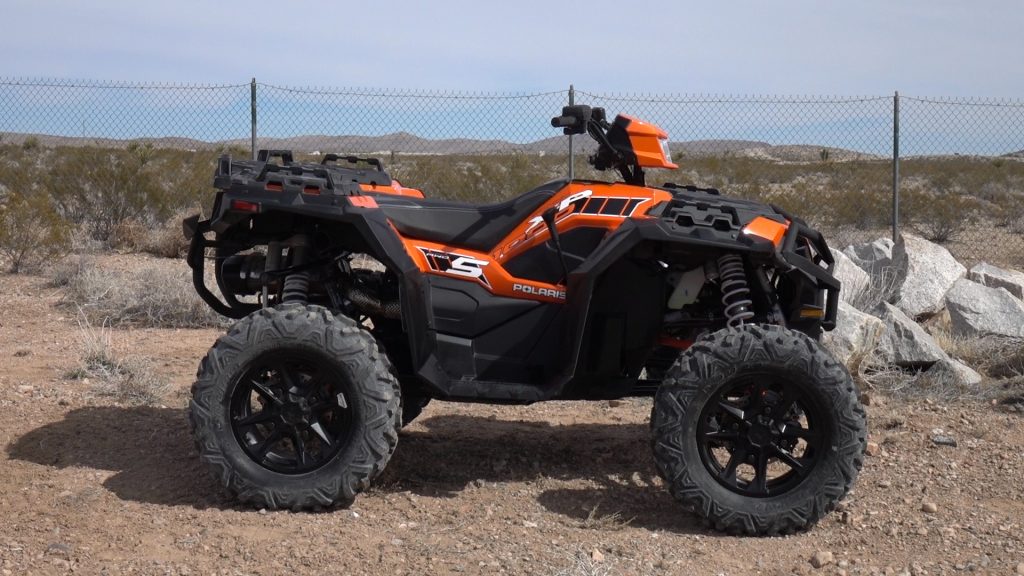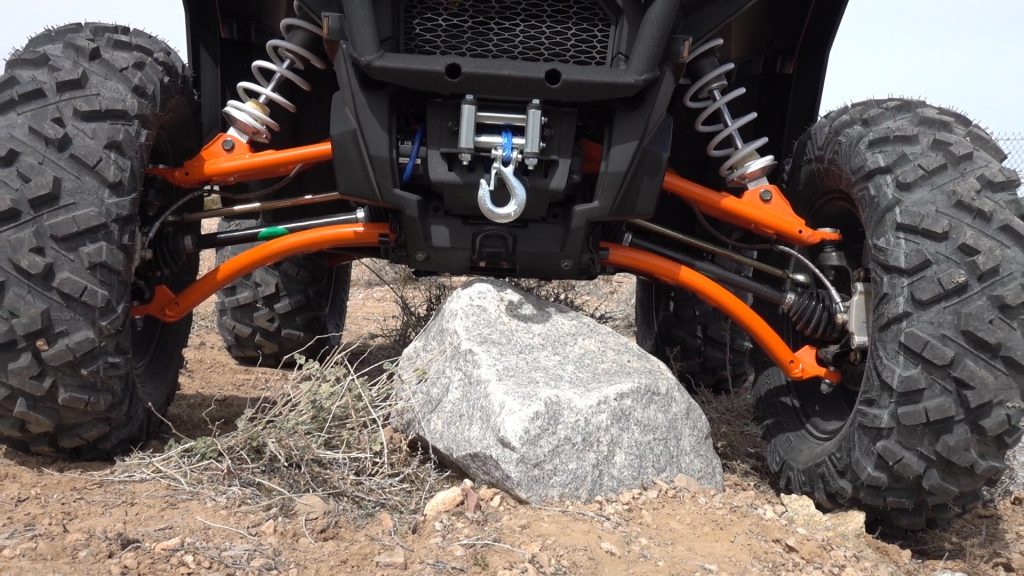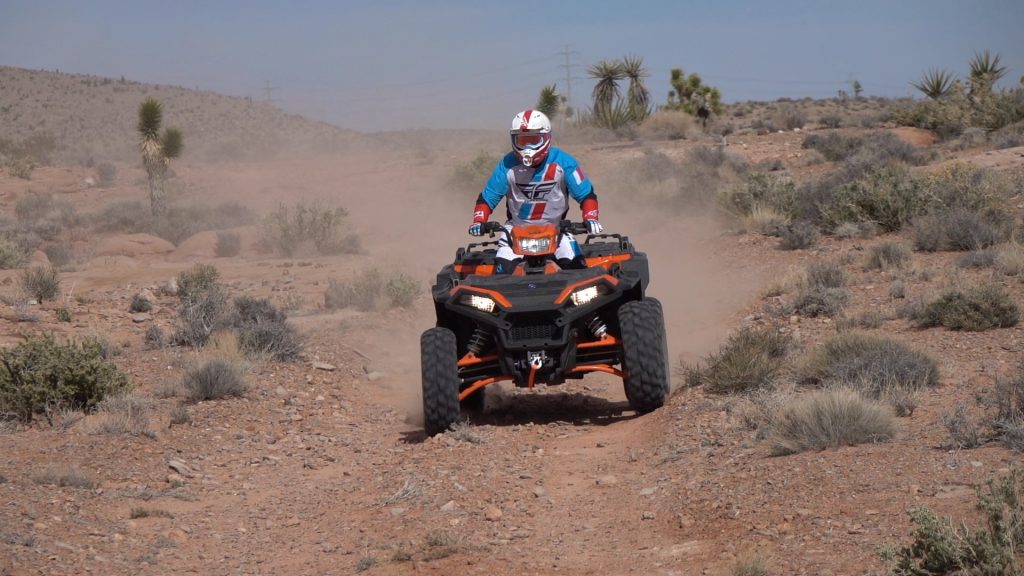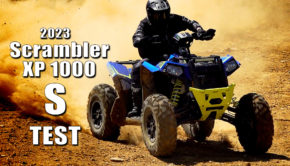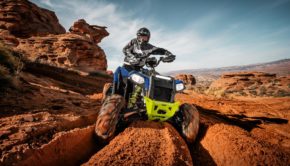Published on August 2nd, 2019 | by Joe
2020 Polaris Sportsman XP 1000 Test Review: VIDEO
2020 Polaris Sportsman XP 1000 S Test Raankings
Summary: We could see the Sportsman S working hard on a big ranch, construction site, or being used to haul back big game from a hunt. It’s sure to be the dominant Sport Utility 4x4 ATV force in the desert, dunes, and a dream machine for those looking to take on many of today’s wider, gnarlier trails.
4
1 Day Test
Polaris Creates a NEW Class of ATV
Since launching the Sportsman XP 1000 in 2015, Polaris has been in a back and forth horsepower war with Can-Am in the one-liter, sport utility segment. With butter smooth clutching on the Sportsman and various throttle modes to tame down the power now standard in the class, it was becoming clear that more power may no longer be what’s best for many riders. Something different was needed, but how that would manifest was unclear until March 1st, 2019, in the desert of Nevada, leaving us with a very exciting secret until the release of this video.
Introducing the 2020 Polaris Sportsman XP 1000 S
For 2020, Polaris is taking the Sport Utility 4×4 segment to an insane new level with the release of the new Scrambler XP 1000 S. At an incredible 55” wide, it boasts suspension travel that rivals dirt bikes, unheard of on any previous production ATV. Perhaps, most importantly, Polaris claims to have put a lot of work into improving the durability of the new 1000 S, making the Sportsman sound like the ultimate 4×4 ATV for gnarly desert terrain, or wider, more gnarly trails created by SXS.
All New Chassis and Suspension
Along with its ground breaking 55” width, Polaris added around 4” of wheelbase to the front of the Scrambler S. Designed from the ground up for its 55” width, suspension travel, and larger tires, the 1000 S is built on a brand new frame that’s a claimed 31% stronger through the mid-section. All bolted joints are double sheered and boxed in at the rear of the quad.
Suspension geometry is claimed to have been completely updated as well, to help reduce tire scrub throughout more of the suspension travel for improved suspension feel. Wider Dual A-Arms at both ends, with high-clearance lower front A-Arms mate up to Walker Evans, 2.0 shocks. They feature spring preload and crossover adjustability, along with 16 way compression damping adjustment. They control 11.6” of wheel travel up front and a whopping 14” of travel out back.
Originally released on their Predator 500 Sport ATV decades ago, Pro Steer has returned for 2020. Pro Steer essentially adds a linkage to the steering system and moves the inner tie rods outward to reduce bump steer. The Sportsman S also receives a new variable assist power steering unit that’s calibrated specifically for the new machine.
The Sportsman rides on 27×9-14 front and 27×11-14 rear Duro Power Grip V2 tires. Polaris went with 14” cast-aluminum wheels; surprising, since they feel that a 27” tire provides a better ride and resists flats better on a 12” rim. They use wider tires out back on the Sportsman for improved towing and load stability.
Dimensions have grown quite a bit compared to the 2019 Sportsman XP 1000 Premium we recently tested. Boasting 2.6” more suspension travel front and 3.75” more out back, the S is a claimed 7.4” wider at 55”. Its wheelbase is around 4” longer at 57.4”. It enjoys 2.5” additional ground clearance at 14.5”. Seat height has now reached motocross dirt bike levels at 37”. The Sportsman’s added durability, work capability, width, and suspension upgrades have added a 92 lb. increase with the S tipping the scales at a somewhat frightening claimed dry weight of 970 lbs.
Updated Engine and Drive Line
The Sportsman is powered by the same fuel-injected, 952cc, parallel twin-cylinder, Polaris Pro Star engine with four-valves and single-overhead-cams per cylinder that were used in previous Scrambler and Sportsman 1000 models. The S model receives a new exhaust with a centrally mounted exhaust silencer. With its electronic throttle, the S receives Polaris’ 3-mode selectable setup, with Work, Standard, and Performance modes. Work mode reduces the total amount of throttle available and spreads it across the entire throw of the throttle for precise, low-speed control. Both Standard and Performance modes offer full power with Standard mode, smoothing delivery at lower throttle settings for improved manageability at lower speeds. The transmission’s internal drive chain and sprocket were widened for added strength. To help ensure front drive durability, Polaris took the front drive out of their Ranger 1000 for use in the Sportsman, which also facilitates four-wheel engine braking with Active Descent Control. The axles are also said to have been beefed up.
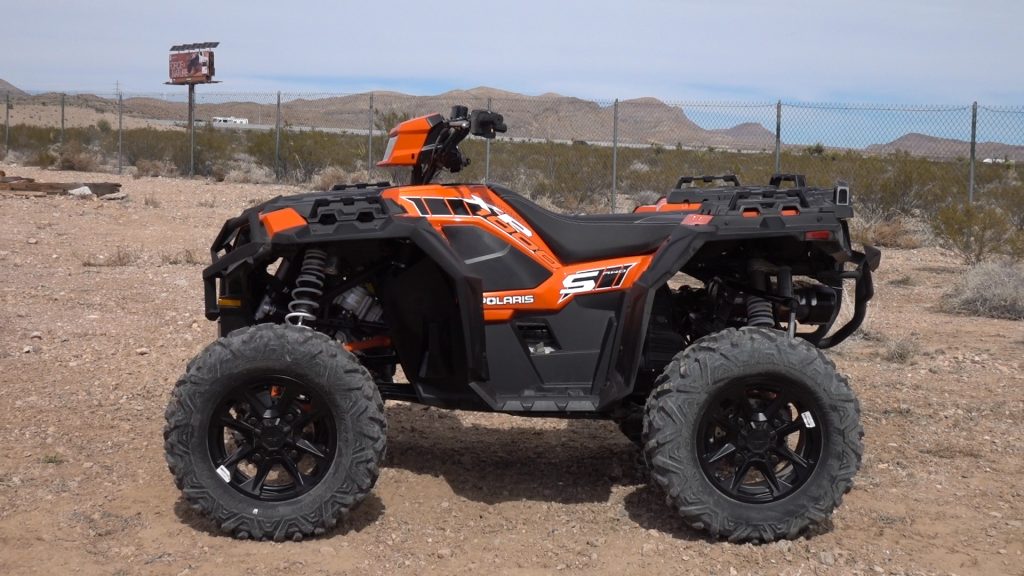
The Scrambler S is powered by a familiar 952cc, parallel twin-cylinder, Polaris Pro Star engine with a beefed up transmission, drive train, and new exhaust.
For those looking to add bigger tires, the Sportsman S can accommodate larger, more aggressive tires without the need to add a lift kit to the ATV. This prevents adding additional angle to the axles and CV joints, which compromises durability.
Brakes
The Sportsman is slowed by a single handlebar lever controlled all-wheel braking system with a separate rear brake pedal. Brake lines are steel braided for power and feel.
Enhanced Work Capability
Still featuring cargo boxes under the entire front rack and center of the rear rack, rack capacity has been increased by almost 80lbs front to 200lbs and 60lbs rear to 300lbs on the S model. We were happy to see the upgrade from a 1.25” to a full-size, 2” hitch receiver, helping provide a 250lb increase in towing capacity to 1,750lbs.
Additional Changes and Features
There’s an LED display with Bluetooth phone connectivity. Three 50w headlights light up the night. Front and rear bumpers come standard, as does the 3,500lb winch.
The Test
Dressed in riding gear from Fly Racing, Ed Teixeira, Owner of Teixeira Tech Chassis Components, was chosen to test ride for us due to his desert racing and Scrambler building / riding experience. Our time to test was rather brief, so we’re hoping for a long-term test in the future with time to set up the suspension and ergonomics to further explore its capabilities.
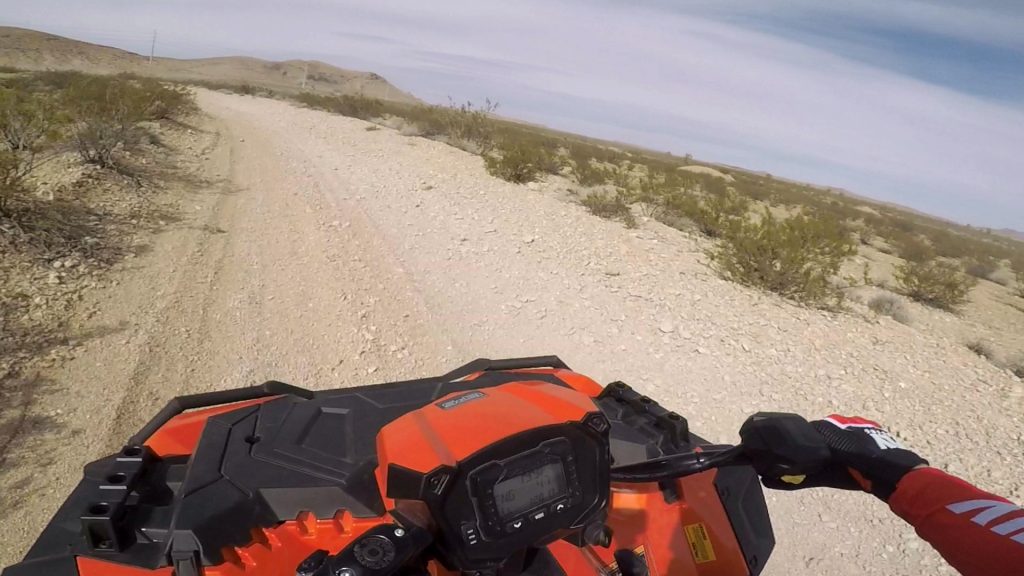
While its increased mass might detract a bit from the power to weight ratio of the S, in wide open spaces we found it more thrilling to ride than the original Sportsman 1000
Stepping aboard the Sportsman, the first thing you notice is that the seat height is super tall, although you quickly adjust to it as you feel out the machine’s confidence inspiring stability. Engine performance was very familiar. The Sportsman pulls smoothly off the bottom, pulling hard through the midrange, never feeling as though you’re going to run out of power. While its increased mass might detract a bit from the power to weight ratio of the S, in wide open spaces we found it more thrilling to ride than the original Sportsman 1000, as you’re able to more easily take advantage of the engine’s nearly 90 horsepower output. For working or casual cruising, engine braking works well.
Suspension performance is like the standard model on steroids. It’s plush over small to medium sized bumps and its increased suspension travel will absorb hits that would push the narrower 1000’s shocks to their limits. The Sportsman S is better at dealing with whooped out terrain, although if you push it too hard, you will find the limits of the travel with the stock shock settings. Jumping, the nearly half ton monster lands with amazing plushness from a couple feet of air, but its bottoming resistance doesn’t seem on par with the new Scrambler S.
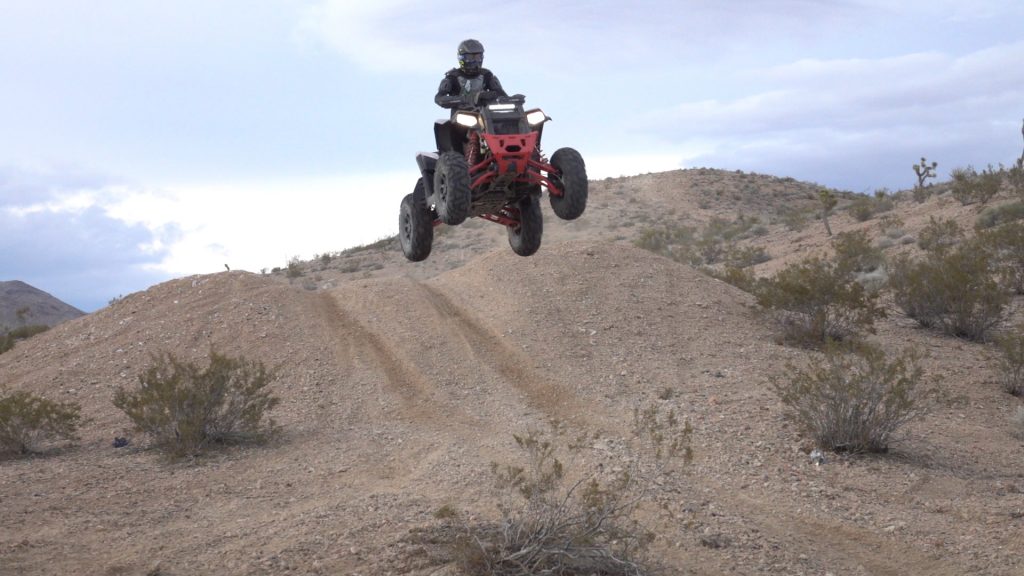
Jumping, the nearly half ton monster lands with amazing plushness from a couple feet of air, but its bottoming resistance doesn’t seem on par with the new Scrambler S.
The longer front end helps hold the front end down on climbs and the back end planted on descents. Its 55” width takes stability to the next level on sidehills with some body roll during aggressive cornering. Braking hard into turns, the factory shock settings allow the front end to dive a bit more than we’d like. Entering corners aggressively, the front-end pushes more noticeably than the Scrambler S. We feel it’s primarily due to the traction of the wider rear tires overpowering the fronts. The Sportsman S also uses a different Duro tire than the Scrambler. At normal trail speeds, we found cornering predictability and overall suspension performance to be quite good, and we suspect we can improve the Sportsman’s high-speed prowess by taking advantage of the shock’s adjustability. However, as a machine with essentially the same engine as the Scrambler 1000 S, we feel the Sportsman’s stock suspension settings should be slightly more in line with the Scrambler’s. After all, just because the Sportsman can work hard, it doesn’t mean the rider doesn’t want to ride just as hard when the work gets done.
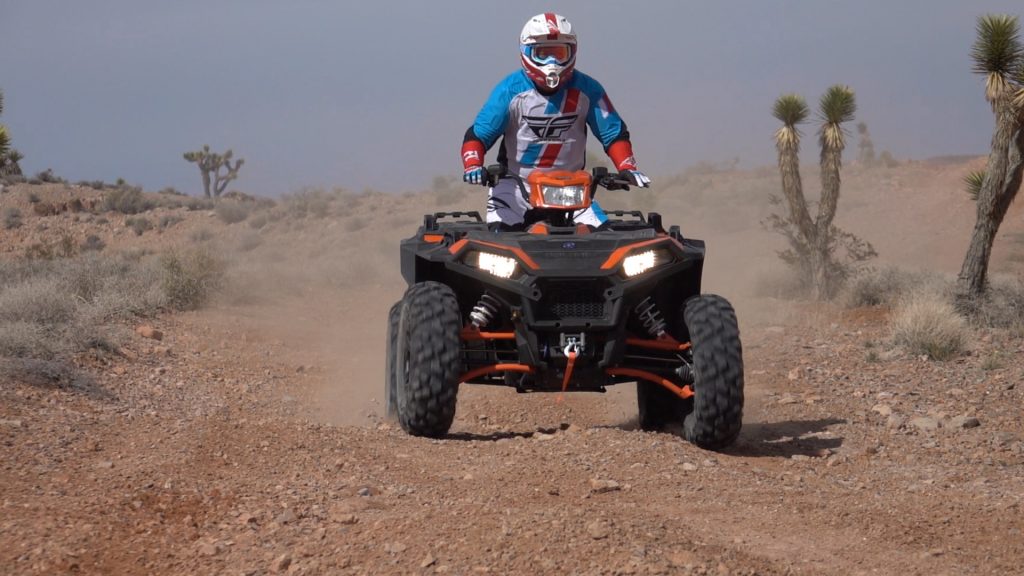
Ed felt that the S model’s high-speed steering felt less sensitive, overly nervous, and more natural than years past.
Having experienced the high-speed twitchiness of the previous Scrambler and Sportsman models, Ed felt that the S model’s high-speed steering felt less sensitive, overly nervous, and more natural than years past. Power steering performance remains very good at lower speeds.
While weight is definitely getting out of hand for a ride-on, four-wheeled machine; as usual, Polaris’ power steering and notoriously plush suspension do a remarkable job of hiding its heft on the ground. Make no mistake about it, though; once you’ve lifted off, in-flight corrections are rather difficult.
Conclusion
As thrilled as we are about this innovative machine, it’s, once again, a glaring reminder that manufacturers are forgetting that blue-collar performance enthusiasts are the ones that put the powersports industry on the map.
Admittedly, this ATV isn’t for everybody. It is as expansive as many SXS. It’s too wide to fit between the wheel wells on some mid-size trucks. If you ride trails near 50” to 60” in width and speed is your thing, you might be faster on a narrower, more maneuverable machine. Also, be prepared to sacrifice a parking spot in many garages.
The long-travel, wide-track 2020 Sportsman XP 1000 S creates a new segment in ATVing, bringing with it some much needed excitement to the world of ATVs. We could see the Sportsman S working hard on a big ranch, construction site, or being used to haul back big game from a hunt. It’s sure to be the dominant Sport Utility 4×4 ATV force in the desert, dunes, and a dream machine for those looking to take on many of today’s wider, gnarlier trails.
With no other machine in its class, the 2020 Polaris Sportsman XP 1000 S is a more capable Sport Utility ATV designed to keep up with a changing off-road world.
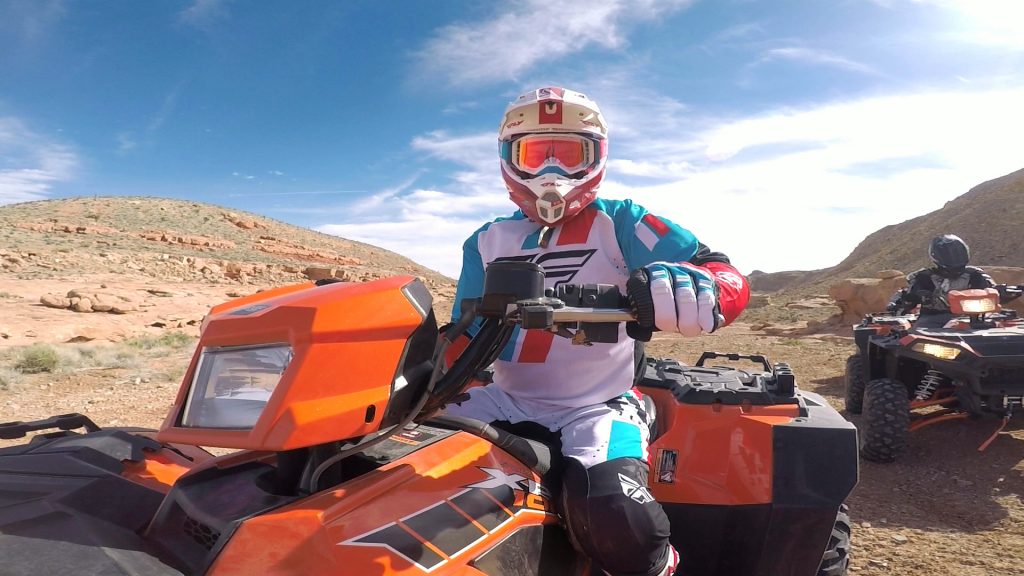
With no other machine in its class, the 2020 Polaris Sportsman XP 1000 S is a more capable Sport Utility ATV designed to keep up with a changing off-road world.
Manufacturer: Polaris
Model: 2020 Sportsman XP 1000 S
MSRP: $14,999

